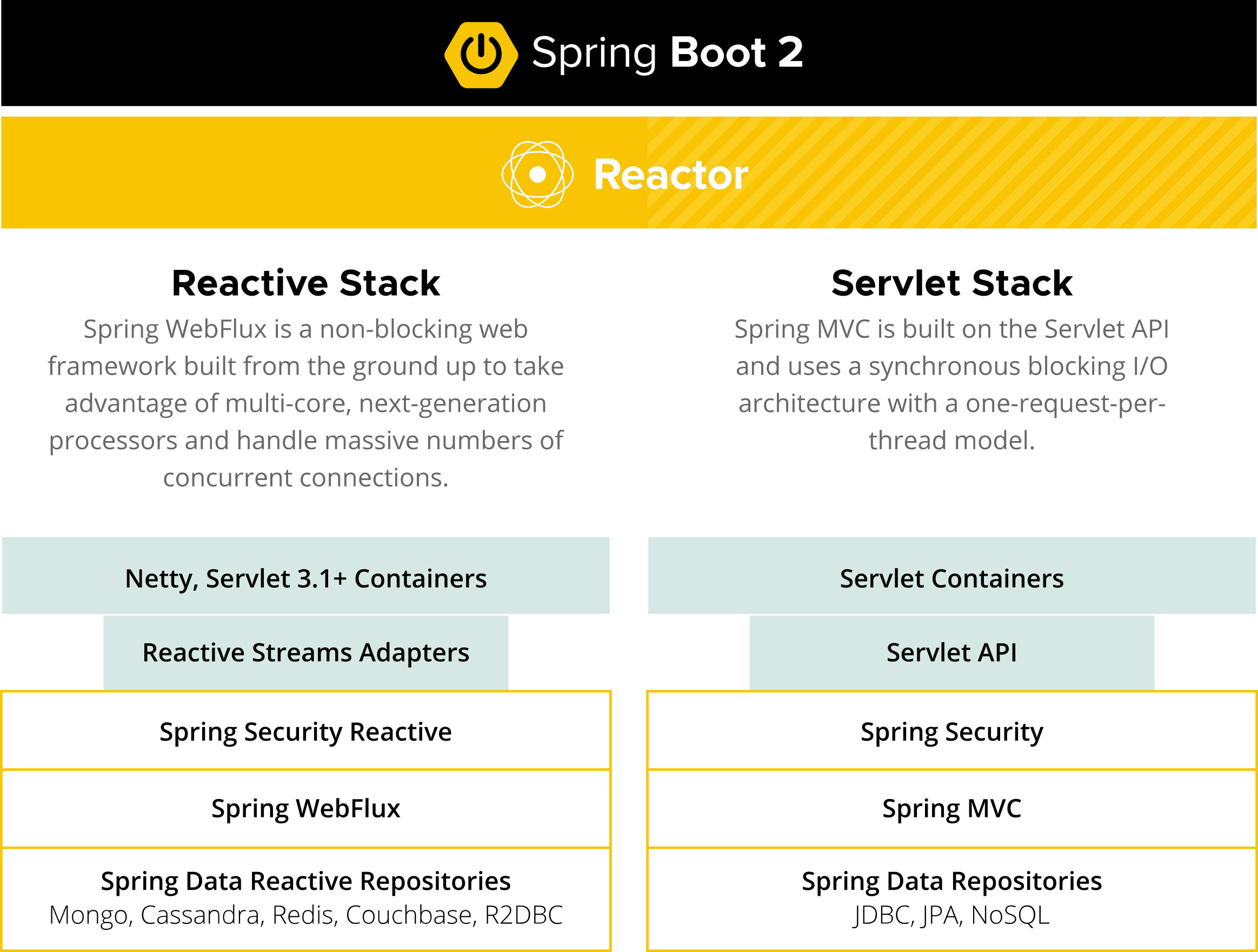Microservices
What is reactive processing?
Why use reactive processing?


Project Reactor
Reactive Microservices
Reactive Microservices With Spring Boot


Integration with common technologies
Accessing and processing data in a reactive way is important. MongoDB, Redis, and Cassandra all have native reactive support in Spring Data. Many relational databases (Postgres, Microsoft SQL Server, MySQL, H2, and Google Spanner) have reactive support via R2DBC. In the world of messaging, Spring Cloud Stream also supports reactive access to platforms like RabbitMQ and Kafka
Success Stories